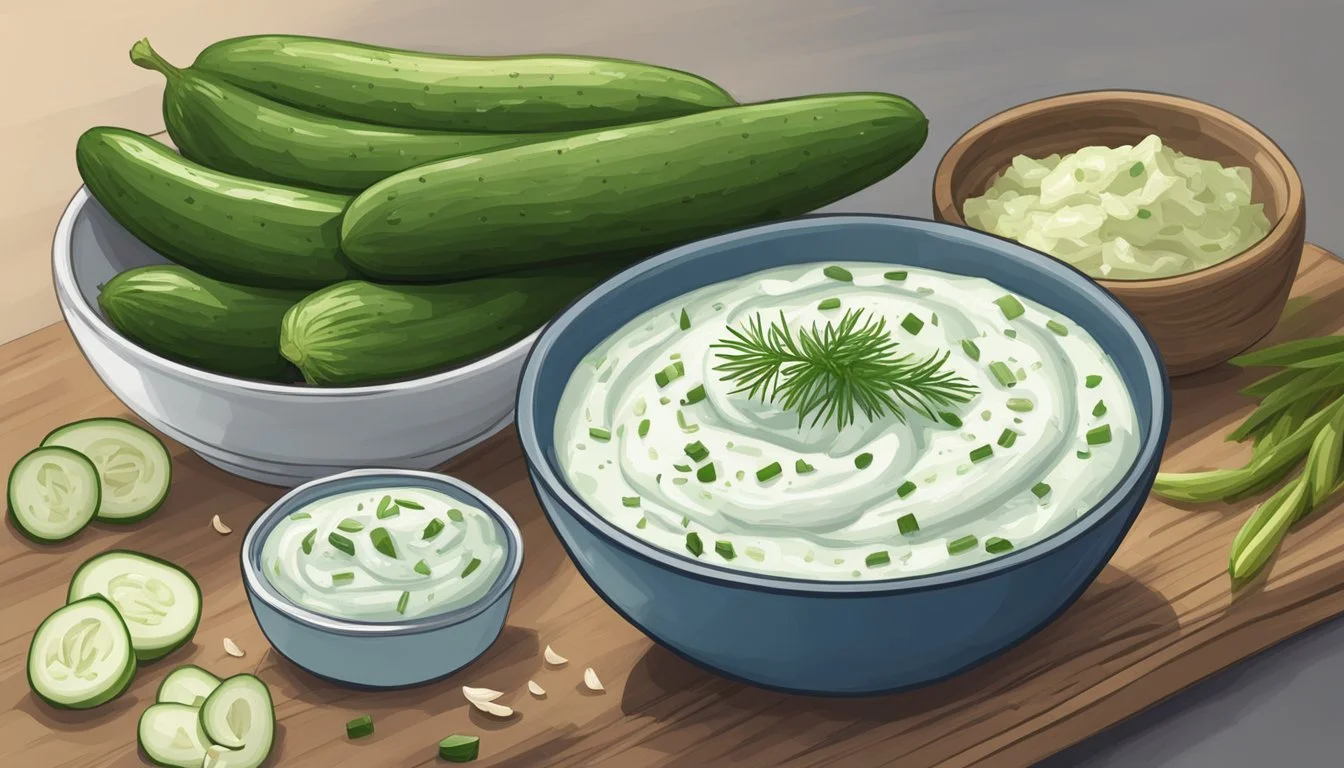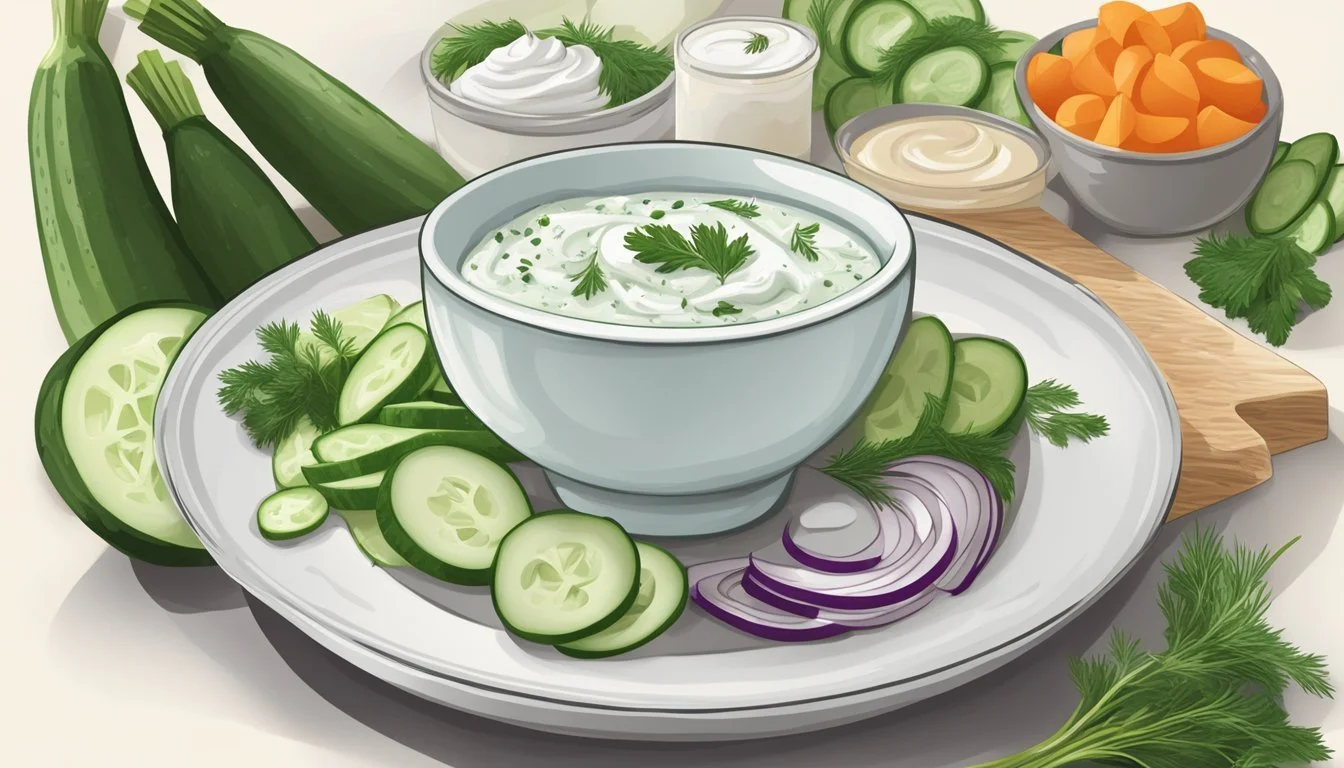Is Tzatziki Sauce Gluten-Free?
Unveiling the Facts on Its Ingredients
Tzatziki sauce is a popular condiment that originates from Mediterranean cuisine, often lauded for its refreshing taste and versatility. It is typically made from a simple combination of yogurt, cucumbers, garlic, olive oil, and various herbs such as dill. Due to its straightforward ingredients, tzatziki is naturally gluten-free, making it an excellent choice for those adhering to a gluten-free diet or with conditions like celiac disease.
It is crucial, however, for individuals with gluten sensitivities to consider the environment in which the tzatziki is prepared. Cross-contamination with gluten-containing foods can occur if the sauce is made in a kitchen where such ingredients are handled. Additionally, when opting for store-bought tzatziki, it is important to read labels to ensure that no gluten-containing additives are used and to look for gluten-free certification.
While the base ingredients of tzatziki are generally safe for gluten-free consumption, vigilance is required when it is served as part of a larger dish or meal. Often, tzatziki is served with foods like pita bread, which contains gluten. It is recommended to serve or enjoy tzatziki with gluten-free alternatives or fresh vegetables to maintain a gluten-free diet.
What Is Tzatziki Sauce?
Tzatziki sauce is a staple of Mediterranean cuisine, known for its refreshing taste and versatility. It has its roots in the culinary traditions of Greece and the greater Middle East and is often served as a condiment or dip in Greek restaurants.
Historical Background
Tzatziki has its origins in the cuisines of Southeast Europe and the Middle East. It's a traditional sauce that has been relished for its cool and creamy texture to complement a variety of dishes. Often associated with Greek cuisine, it is a reflection of the region's culinary history and has been a part of the dietary habits in these cultures for generations.
Traditional Ingredients
The base of traditional tzatziki sauce begins with greek-style yogurt, known for its thick and creamy texture. Fresh cucumber is a non-negotiable ingredient, usually finely grated and strained to remove excess moisture.
Garlic provides a pungent kick, finely minced or grated, and is balanced with a hint of salt. Extra virgin olive oil adds a smooth richness, while dill lends its distinctive fragrant note. Occasionally, lemon juice is included for a fresh zesty flavor.
Here's a concise list of the classic ingredients found in tzatziki:
Greek-style yogurt
Cucumber
Garlic
Salt
Extra virgin olive oil
Dill
Optional: Lemon Juice
These ingredients are combined to create a sauce that is both flavorful and refreshing, perfect for complementing a variety of Mediterranean dishes.
Health and Nutritional Profile
When examining the health and nutritional characteristics of tzatziki sauce, one should consider its macronutrient composition, the dietary benefits it offers, and any potential allergens it may contain.
Macro and Micronutrients
Tzatziki sauce typically consists of Greek yogurt, cucumbers, garlic, olive oil, and various herbs such as dill. Here is a general breakdown of its macronutrient content:
Calories: It is a low-calorie condiment, with roughly 60 calories per 2-tablespoon serving.
Protein: Greek yogurt provides protein; approximately 2 grams per serving.
Fat: The olive oil contributes to the fat content, with 4.5 grams per serving.
Carbs: Tzatziki is considered low carb, offering about 3.5 grams of carbohydrates per 2 tablespoons.
Fiber: Cucumbers add to the fiber content; however, it contains less than 1 gram per serving.
Calcium: Each serving provides some calcium, essential for bone health.
Dietary Benefits
Low Carb: The low carbohydrate content makes tzatziki an appealing choice for those on a low-carb diet.
Dairy: As a dairy-based sauce, tzatziki is a source of calcium and protein, promoting bone and muscle health.
Fiber: Although minimal, the fiber from cucumbers aids in digestion.
Potential Allergens
Dairy: Individuals with lactose intolerance or a dairy allergy should be cautious, as tzatziki contains dairy from Greek yogurt.
Sodium: While not typically high in sodium, its content can vary, so those on a sodium-restricted diet should check labels carefully.
Understanding Gluten
When one talks about gluten, it generally relates to dietary considerations and various health concerns. It is crucial to distinguish between gluten-containing items and gluten-free alternatives, especially for those with gluten sensitivities or celiac disease.
What Is Gluten?
Gluten is a group of proteins, namely gliadin and glutenin, predominantly found in wheat, barley, and rye. Its elastic texture is what gives bread its chewy property and allows it to rise before baking. Gluten is widely utilized in the food industry as a stabilizing agent, not only in baked goods but in a range of processed foods as well.
Gluten-Related Disorders
Several health conditions require individuals to adopt a gluten-free diet:
Celiac disease: An autoimmune disorder where the ingestion of gluten leads to damage in the small intestine. For these individuals, adhering to a strict gluten-free diet is essential for health and well-being.
Non-celiac gluten sensitivity: While the symptoms can resemble those of celiac disease, the immune response differs, and there is no damage to the small intestine. Nonetheless, a gluten-free diet can alleviate symptoms for these individuals.
Wheat allergy: A person with a wheat allergy has a specific reaction to wheat proteins, including but not limited to gluten. Avoiding wheat-based products is necessary to prevent allergic reactions.
It is important to note that opting for a gluten-free diet is not inherently healthier for the general population and is primarily beneficial for those with gluten-related disorders.
Tzatziki Sauce and Gluten
Tzatziki sauce is a popular Mediterranean condiment that often raises questions for those adhering to a gluten-free diet. This section will explore the ingredients of traditional tzatziki sauce, potential cross-contamination issues, and the importance of reading labels to ensure a gluten-free experience.
Is Tzatziki Sauce Naturally Gluten-Free?
Tzatziki sauce is typically made from a simple mix of ingredients that are naturally gluten-free. The core components include:
Cucumber: Adds texture and freshness.
Greek yogurt: Provides a creamy base.
Garlic: Offers a sharp taste.
Lemon juice: Brings a zest.
Fresh herbs (dill or mint): Contribute to the distinctive flavor.
Olive oil: Enhances richness and consistency.
These ingredients do not contain gluten, making tzatziki sauce a safe choice for individuals with celiac disease or gluten sensitivities.
Cross-Contamination Concerns
However, when purchasing commercial tzatziki or eating out, cross-contamination can occur. Cross-contamination may happen in facilities that also process gluten-containing products or through utensils and serving dishes that have been in contact with gluten. For people with celiac disease, even minor cross-contamination can trigger health issues.
Reading Labels for Gluten
To ensure tzatziki is gluten-free, it is crucial to:
Check labels for gluten-containing ingredients or advisory statements about possible cross-contamination.
Verify certifications: Look for official gluten-free certification marks.
Inquire at restaurants: Confirm preparation methods and ingredient sourcing to prevent accidental gluten ingestion.
By considering these factors, individuals can enjoy tzatziki sauce while adhering to a gluten-free diet with confidence.
Making Your Own Tzatziki Sauce
Creating a homemade tzatziki sauce ensures it fits a gluten-free diet, providing a refreshing and healthy condiment that's versatile for various dishes.
Gluten-Free Recipe
To start, one needs to assemble the following gluten-free ingredients:
1 cup of plain Greek yogurt
1 medium cucumber, seeded and finely grated
2 cloves garlic, minced
1 tablespoon olive oil
2 teaspoons fresh dill, chopped
1 tablespoon lemon juice
Salt and pepper to taste
The process involves a few simple steps:
Prepare the cucumber: After grating, wrap the cucumber shreds in a clean towel or paper towels and squeeze out the excess liquid to prevent a watery sauce.
Mix ingredients: In a mixing bowl, combine the yogurt, strained cucumber, garlic, olive oil, dill, and lemon juice. Mix until fully incorporated.
Season: Add salt and pepper to the mixture according to taste preferences.
Refrigerate: For best flavor, cover the bowl and allow the sauce to rest in the refrigerator for at least an hour before serving.
Alternative Ingredients
For those looking to customize their tzatziki or substitute due to dietary restrictions or personal preference, consider the following alternatives:
Yogurt: Use dairy-free yogurt varieties made from coconut, almond, or soy to cater to those with dairy intolerance or those following a vegan diet.
Cucumber: If a lighter tzatziki is desired, English cucumbers can be used as they have fewer seeds and a thinner skin, eliminating the need for peeling.
Acid: Swap lemon juice for red wine vinegar for a different acidic profile.
Herbs: Fresh mint or parsley can replace or be used in conjunction with dill to adjust the flavor.
Seasoning: Introduce other seasonings such as garlic powder or a hint of cayenne pepper for added spice if fresh garlic isn't preferred.





